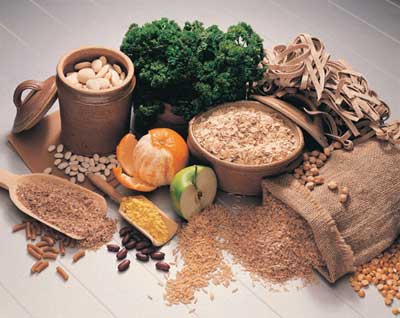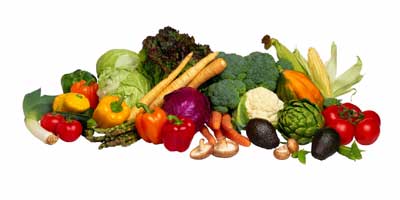Aside from helping you lose weight, the goal of the USDA Dietary Guidelines is to help you reach your overall nutrient requirements. Weight loss without good nutrition does not help you truly produce a healthy lifestyle. To eat according to the new food pyramid, you need to be knowledgeable about each food group. Then you can translate the facts into actions that will help control your weight and stay healthy. In this article, you will explore each food group to find out:
- How Much for Me?: the amount of food you need from each food group
- What's in It for Me?: the contributions each food group makes to your health
- Best Bites for Weight Loss: the lowest-calorie choices in each food group and how to comparison shop
- Making It Work for You: strategies for including this food in your daily routine
- Go for the Goal: goals for improving your intake of the food in each group
Let's begin with a crash course on how to read nutrition labels.
The Nutrition Facts panel on food packages is an important complementary tool of MyPyramid and the Dietary Guidelines. Knowing how to use it will help you avoid foods that might sabotage your weight-loss plan. Once you know what to look for on labels, you can apply your label know-how to foods in each food group:
Serving Size
This is the first listing on the panel, and understanding it is key to deciding how a particular food fits into your calorie budget. The serving size is NOT necessarily the whole package, nor is it necessarily the amount of food you actually eat. The serving size is simply a standard amount used in the food industry.
For instance, a can of soup that you consider to be one lunchtime serving may actually be two if you consult the label. And that bitsy bag of chips likely isn't one serving either. All the nutrient information on the label, including the number of calories and fat grams, is linked to the serving size, so be sure to compare it to what you actually eat. If you don't, you can blow your whole day's diet without realizing it. At first glance, the calorie count on that little bag of chips may not seem too bad, but when you realize there are two servings and you have to double the number of calories (or eat half the bag), it will look a lot different.
Any time you eat more or less than the serving listed, you'll need to adjust the nutrition information accordingly. In the sample label below, the serving size is listed as one cup. If you eat half a cup, you'll only get half the calories: 130 instead of 260. The same goes for the nutrients. On the other hand, if you eat two cups of this food, you'll get double the nutrients: 520 calories and twice as much of everything else, too.

Publications International, Ltd
USDA nutrition labels are a great source of dietary information.
Compare, Compare, Compare
When you're trying to lose weight, the Nutrition Facts label is also a good tool for comparison shopping. First, check the serving size on both labels to make sure you're comparing the same serving size. If the serving sizes are different, you'll need to make adjustments. For instance, if you're comparing a one-cup serving with a half-cup serving, you'll need to double all the nutritional values on the second product. Only then will you discover which is a better nutritional bargain.
Sometimes it might not be so easy to compare serving sizes. One package might say five crackers are a serving, while another says that 12 crackers make a serving. The difference is in the size and weight of the crackers -- some are small or light and others are large or dense. To make a valid comparison, check the number of grams in parentheses after the serving size. If the weights are similar, you can make a direct comparison and an informed decision.
Percentage of Daily Value
The "% Daily Value" gives you an at-a-glance idea of the nutrients in a serving of food and how it fits into your diet. Think of the Daily Value as your "allowance" or "budget" for the various nutrients.
Each day you start with an allowance of 100 percent for every nutrient. Aim to keep your total daily intake to less than 100 percent for Total Fat, Saturated Fat, Trans Fat, Cholesterol, and Sodium. Other nutrients you want to get plenty of -- fiber, vitamins, and minerals -- are listed closer to the bottom of the label. Aim to get 100 percent or more of these nutrients each day.
The sample food in the label shown has a % Daily Value for fat of 20 percent. That means one serving, in this case one cup, of the food uses up 20 percent of your daily fat allowance. Eat two servings, and you've suddenly used up 40 percent of your daily fat budget -- almost half of the total amount of fat you should eat in a day.
Daily Value numbers are based on a 2,000 calorie eating pattern. If your eating pattern has only 1,800 calories, then one serving of the food would actually use up a little more of your fat allowance for the day. A quick way to use the % Daily Value is to remember that 5 percent or less of a nutrient is low for a serving, and 20 percent or more is high.
Now that you're armed with label lingo, you're ready to discover how to put the USDA Dietary Guidelines into action for each food group in your food pattern. We'll explore MyPyramid section by section, starting on the left side with grains.
Advertisement

